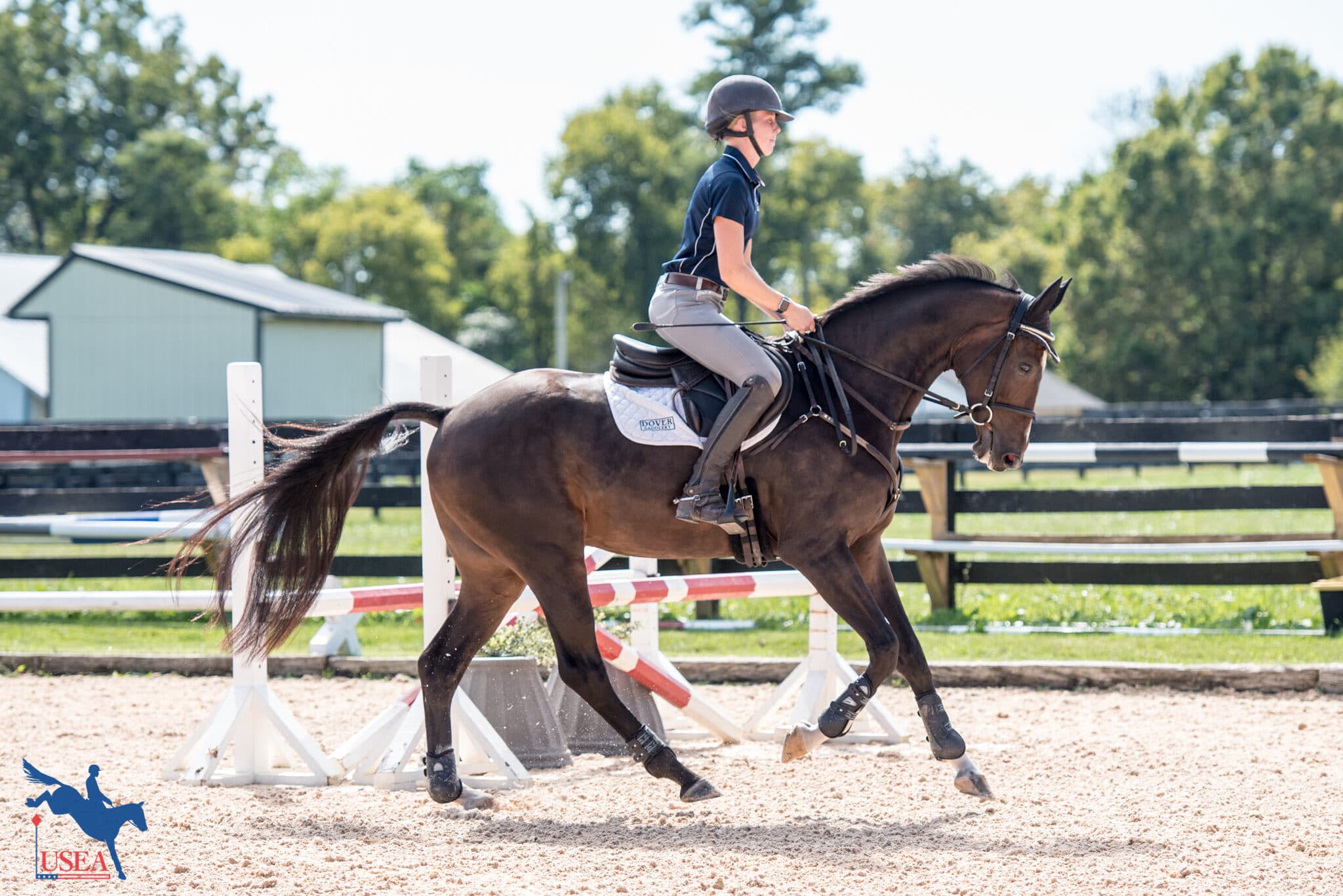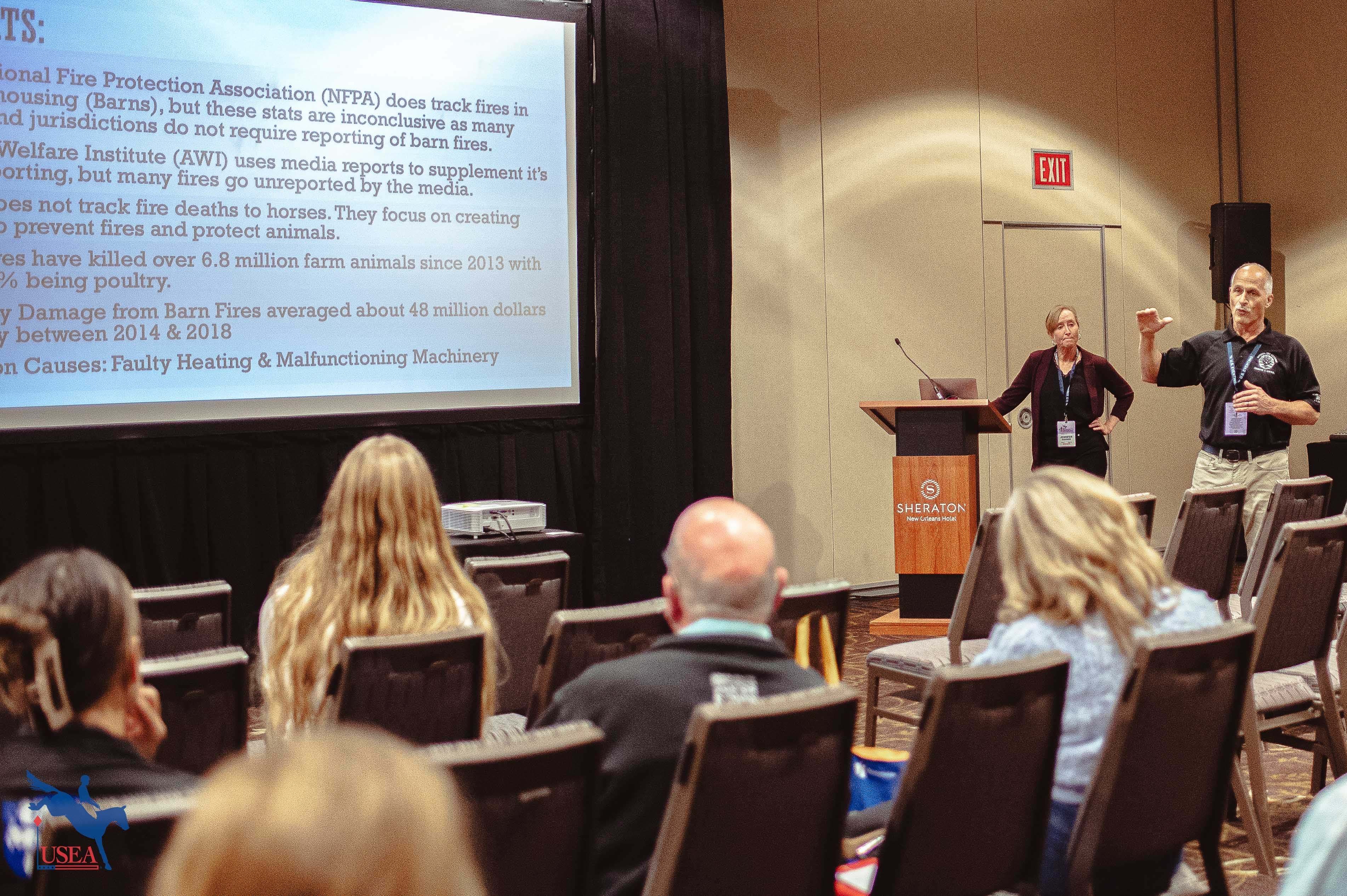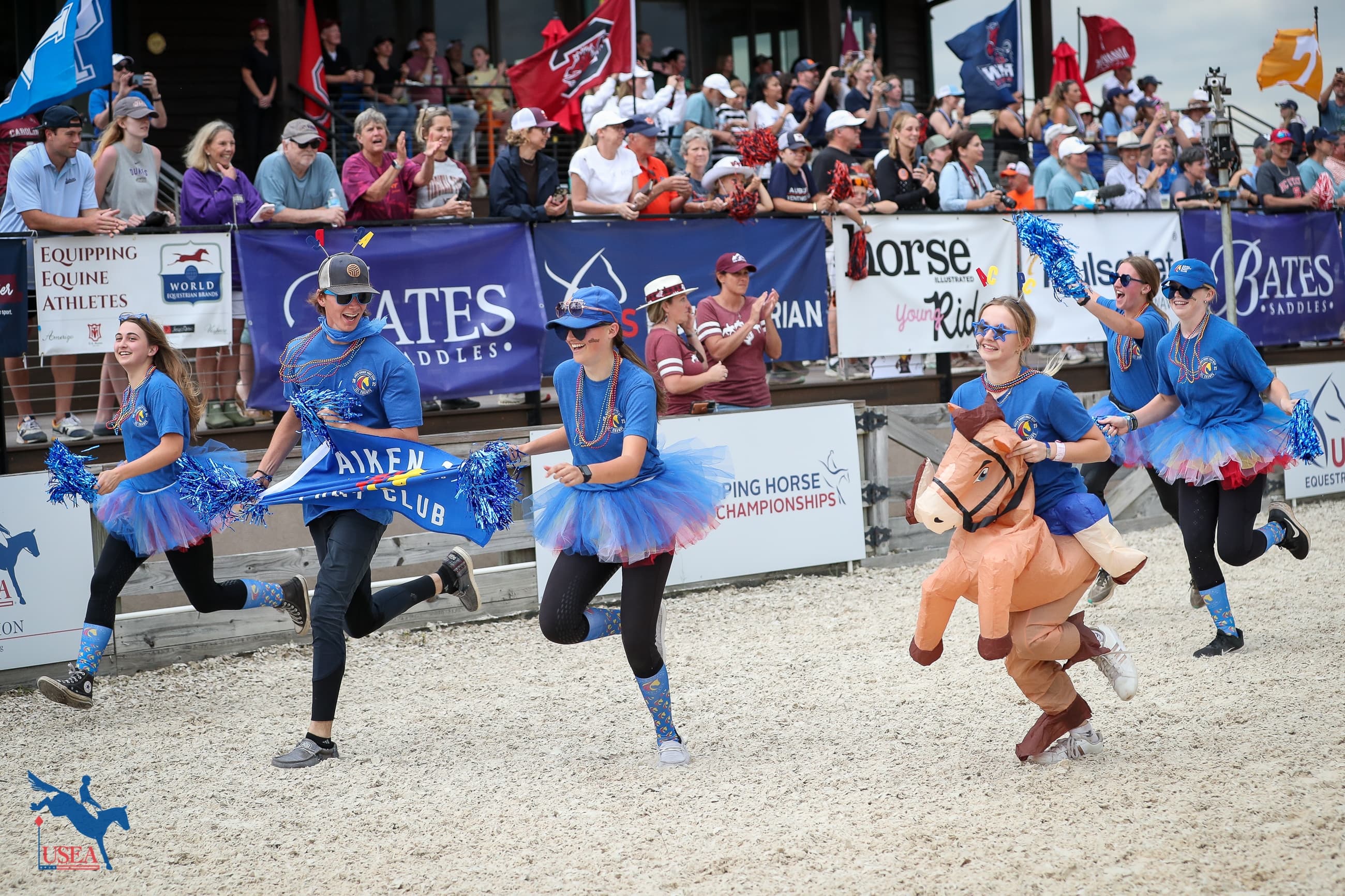Creating an Effective Warm-up For Your Young Horse with Megan Kepferle

The Young and Future Event Horse article series is being provided through a partnership between Mythic Landing Enterprises, LLC. and the USEA.
Warming your young horse up before a jump school or before a jumping phase of competition is critical to the outcome of that school or jumping phase. Making absolutely sure your horse is in front of your leg is of the utmost importance. As any rider can attest to, it can often be quite easy for your horse to slip behind your leg without you even realizing that they have sucked back slightly. It is crucial with young horses that you set a precedent that they need to remain forward at all times, as you always want their answer to any question to be a forward one. This is a great exercise that can be used in the ring and out in the field that gives both horse and their rider a specific idea to focus on.
The premise of this exercise is asking your horse to go forward and come back on a square. Depending on your horse’s experience and comfort level, this can be done at the walk, trot, and eventually at the canter as well. Doing this at the walk can be a bit difficult on a younger horse that doesn’t have all the pieces in their education yet, so depending on whether your horse is more comfortable at the trot or canter, use that gait first.
To begin, go down the long side of your arena or riding area in a neutral speed. If you are rating your speed from one through 10 with 10 being the fastest, Kepferle would say a four is your neutral speed. In the beginning, when you ask your horse go forward, think of going from that neutral four speed all the way up to a seven. Then, in the corner come down all the way back down to a two. It’s possible that you may even need to walk if your horse tends to pull and get strong when you ask them to slow down. As you continue around the arena, play with asking your horse for a little more before coming back down to a slower speed. For example, Kepferle will play with going from a four to an eight, or even a nine, down the long side before coming back to a two, or even a one. Keep in mind that you can utilize this exercise at any gait, but the idea is to stay within the gait for the upwards and downwards transitions. Of course you can always come back to the walk if you are trotting or cantering, but your goal is to remain within the gait as you work your way up and down the scale.
Kepferle explains that before you even start this exercise you do need to make sure that you have a proper ‘whoa button’ installed on your young horse, “Before you can properly train your horse to go forward, you need to properly train them to come back. The more forward-thinking horses are ones that riders generally don’t want to put their leg on. But if you can focus on closing your leg while you’re asking your horse to come back, they will start to accept your rein, seat and leg aides because you’re supporting them with that leg aid.”
With this exercise in particular, remember that you’re traveling on a square, not a circle. It’s important to really ride your horse into the corners and to find them in both reins. This will really set you up for success with the square turns, as you want to avoid only pulling on one rein to make the turn. For the riders, try to focus your attention on your position. As you come into the corner, sit up tall, find resistance in both elbows, sit down and slow your body language through the turn.
As you go down the long sides in that forward canter, you should feel your horse start to relax through their top line. While your horse doesn’t need to be round and on the bit, you should start to feel your horse accepting pressure. And remember to not hold the slower trot or canter for very long, especially with young horses who oftentimes find it more difficult to collect than extend. After a few repetitions, your horse should start looking forward to that slower gait because they know the release will come shortly after.
This is also a great exercise for riders because it keeps them on a very structured path and it also allows them to be very black and white with their horse. Horses get more and more comfortable with an exercise through repetition, and this is an exercise you can add to your everyday ride.
Once you’ve played with this exercise a bunch and feel confident in your horse’s ability, try it with some small jumps. Kepferle shares, “Practice being positive at a simple cross-rail. Put your leg on and be confident that on the landing side of the jump that you can travel positively away from the fence, and then properly balance your horse through a turn. Once you start to challenge your horse, you can come out of the turn with a horse that’s taking you to the jump, and in turn you have a horse that you can ride a little bit straighter.”
Ultimately, this is a really great simple exercise that helps young horses develop transitions, balance, and learn how to accept the riders aids. Riders learn how to properly apply pressure and use their position effectively.
About Megan Kepferle
Megan Kepferle made her mark on the eventing world when she began working for four-star rider, Sinead Halpin in Central New Jersey. In 2012 Meghan was named the Chef d’equipe for the Area II Young Rider Eventing team, championing three consecutive medal winning teams. After working for Sinead until 2015 she went on to build Kepferle Equestrian, which has become a successful training facility, dedicated to furthering the education of young horses, and up and coming riders of all levels. To learn more about Megan and her program, please visit her website.














